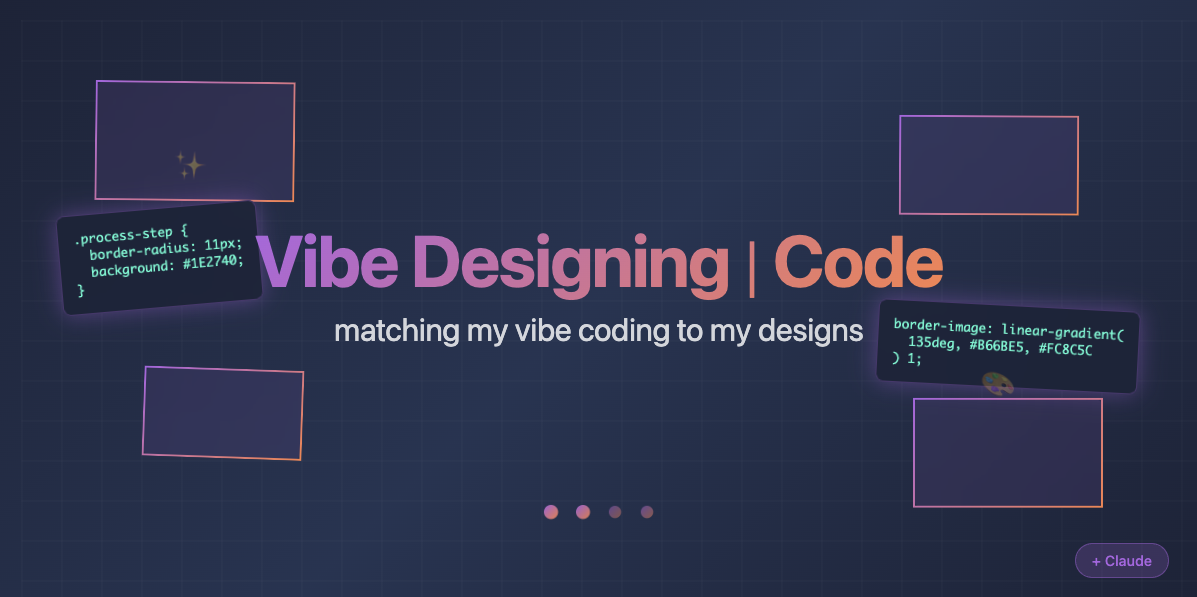Strong Design Culture is the Foundation of Great Craft
Recently, I was watching Stephen Bartlett in an unrelated video and there was a short clip of him speaking at an event in London about culture. “Culture,” Stephen explains, “isn’t the mission or company vision or words on a wall. Culture is behavior. It’s what people do that defines the culture.” As I watched, something clicked in my thought processes and I felt that connecting with other recent events—one from watching Johnny Ive speak about the nurturing of design, and another from a recent interview where I was asked about the design rituals I “insist” on as a leader.
That interview question stuck with me: what rituals do I insist on? It made me realize I don’t insist on rituals or processes. These are a means of providing structure in teams. I cultivate behaviors. With these three ideas coalescing, I wanted to spend some time putting my thoughts down about design teams, building strong design cultures, and how we as leaders are responsible for shaping and scaling design culture.
Why Design Culture Is Your Innovation Engine
But before diving into how to build this culture, it’s worth understanding why it matters so much. Great design culture isn’t just a nice-to-have—it’s the invisible infrastructure that enables extraordinary outcomes.
Psychological Safety Enables Breakthrough Thinking
Johnny Ive observed something profound about how ideas develop: “These ethereal thoughts, these fragile concepts are precarious. And I think a small team of people that really trust each other is fundamentally important.” When teams trust each other deeply, they’re willing to share half-formed ideas that might seem foolish. These fragile concepts often become breakthrough innovations, but only if the cultural environment protects them long enough to develop.
The danger, as Ive notes, is that “what kills most ideas I think are people desperate to express an opinion.” And he’s clear about the distinction: “Opinions aren’t ideas.” When teams prioritize being heard over truly listening, innovation dies in the noise.
In my experience leading global dispersed teams, our monthly cross-functional design discussions became breeding grounds for unexpected solutions. When marketing, product, research, and mobile design came together in a psychologically safe space, ideas emerged that none of us would have reached in isolation. The key was creating space for those fragile concepts to breathe. When there is space to breathe, we then act without fear of reprisal, unlocking ideas that can push our designs from concepts into craft. Craft is found in the millions of decisions in our designs balanced and structured into a focused solution.
That care becomes contagious. When team members see leaders investing in invisible details, they internalize that standard. The culture of craft doesn’t come from mandates; it emerges from modeled behavior.
Belonging Enables Creative Risk-Taking
When I took over a burned-out design team early in my management career, I learned this lesson viscerally. The team was producing work, but the deadlines were so rushed, the work was rough, unpolished. This small team was surviving, not thriving. The previous manager had left, overwhelmed by an impossibly demanding client who consumed most of our billable hours and therefore, our bandwidth. The two remaining designers were frustrated, criticized, and ready to quit.
I made a promise: six months of intensive support to rebuild our foundation, then sustainable quality. I absorbed the client pressure, provided air cover for deep work, and modeled the craft standards I wanted to see. Most importantly, I learned how to push back against customer demands, creating space for the team to do better work rather than just faster work.
After those six months, something shifted. The team didn’t just produce better work; they started taking creative risks again. We moved from constant crisis mode to predictable schedules, with occasional tight deadlines becoming the exception rather than the norm.
The case for design culture is clear. The question is: how do you actually build it?
Building the Foundation: Vision as North Star
As Stephen Covey says, “begin with the end in mind.” But for design leaders, this means getting specific about the behaviors you want to see, not just the outcomes you want to achieve.
What is the vision you have as a leader for your team? Write it out. Not the aspirational poster language, but the actual behavioral reality you’re working toward. What elements will have to be in place for that to be reality? What is the founding element that will be most important for the rest of the vision to take shape?
For my team, I wrote down something like: “We are designers who care deeply about craft and each other. We take creative risks because we trust our team to support us. We push back on unreasonable demands because we know great work requires appropriate time and space. We celebrate both breakthrough innovations and invisible improvements.”
The critical step: gain buy-in from the team. Let them into the process. Let them help shaped and embody it. Culture imposed from above feels inauthentic and breeds resentment. Culture co-created with the team becomes something people feel ownership over.
Vision without authentic action is just wishful thinking.
The Modeling Imperative: Actions Over Announcements
Leaders have to model the behaviors you want to nourish. There is no “do as I say, not as I do” in culture building. If your behavior doesn’t match the vision, everyone will realize that you don’t really mean it, and it becomes another forced initiative. Hypocrisy breeds reluctance and ultimately resentment.
Authenticity Is Your Best Ally
Ive demonstrated this when he spent a Sunday afternoon obsessing over cable packaging details. He wasn’t asking his team to care about invisible details, he was showing them what that caring looked like in practice. As he reflects, “A mark of our how evolved we are as people. It’s what we do when no one sees.”
*tate of Mind Becomes Design Quality
Here’s something profound that Ive shared: “My state of mind and how I am in my practice ultimately is going to be embodied in the work. And so if I’m consumed with anxiety that’s how the work will end up.” The culture you create as a leader directly impacts the quality of work your team produces.
During those intense six months rebuilding my team, I had to consciously manage my own stress levels. When client demands felt unreasonable, I absorbed that pressure rather than transmitting it to my designers. When deadlines seemed impossible, I found ways to negotiate scope or timeline rather than asking my team to sacrifice quality. When re-negotiating deadlines or deliverables wasn’t possible, I took on the extra work.
Mentoring Takes Investment
Building design culture takes time, effort, and probably some budget too. Great design culture requires investment; not just of money, but the scarce resource of time. Design culture is also evolutionary, developing through hours of 1:1 sessions, team critiques and working collaboratively. It also requires the regular team feedback. Most importantly, it requires time spent not just working together, but spending time together sharing experiences that matter.
Create Moments of Connection
Ive’s team had a powerful practice: “It’s very good to make things for each other… It makes you more worried about them than you. It makes you vulnerable and it makes them grateful.” They implemented this literally: “Every Friday morning I asked that one person on the design team would make breakfast for the whole team and we took it in turns.”
They also “would take it in turns to have the design team come to our homes and we would spend a day working in our home.” As Ive explains, “If you’re designing for people and you’re in someone’s living room sat on their sofa… Of course you think differently.”
For my globally dispersed team, the equivalent was as simple as virtual coffee and cocktails sessions—those in timezones past 4pm had cocktails, others still in morning hours had coffee. We met weekly, sometimes just to chat, sometimes to share work in progress. We also met at least annually at 3 day offsites. The investment in relationship building paid dividends when pressure mounted and we needed to rely on each other.
Individual modeling works for small teams. But what happens when you need to scale?
Culture at Scale: Beyond the Core Team
Scaling culture without losing its essence is one of the hardest challenges in design leadership. As Johnny Ive noted when reflecting on Apple’s growth, “There are things that happened that I never saw. I never had the chance and opportunity to weigh in on… I wouldn’t have done that thing over there.”
Hire for Cultural DNA
Make design culture part of your hiring process going forward. Let it be part of the DNA rather than something you retrofit. When interviewing candidates, I ask questions like: “Tell me about a time you cared about a detail that others thought was unnecessary” or “Describe a situation where you had to give difficult feedback to a colleague—how did you approach it?”
I’m looking for people who naturally demonstrate care for craft and can handle the vulnerability that comes with creative collaboration.
Enable Care Across the Organization
Remote versions of care require intentional design. Beyond virtual happy hours, we created systems for celebrating both shipped features and process improvements. We budgeted for annual team offsites that weren’t just about planning, but about building the relationships that enable great work under pressure.
I enabled senior team members to mentor junior designers, creating multiple “culture carriers” rather than depending on my direct influence alone. Culture spreads through relationships and shared experiences, not policy.
*et It Evolve Within Vision
Culture is a living, adapting part of the organization. With strong founding principles in place, make space for the team to make it their own. As my team grew from 3 to 12 people, our Friday breakfast equivalent became monthly cross-functional showcases where different disciplines shared work and challenges. The behaviors evolved, but the underlying care and craft standards remained consistent.
The key insight from Ive remains true: “One of the things that terrifies me… I know that I’ve missed really amazing ideas that came from a quiet place from a quiet person.” At scale, creating multiple opportunities for quiet voices to be heard becomes even more critical.
The Compound Effect of Care
Building design culture is a long game. The behaviors you model today compound over months and years into something much larger than their individual parts. Teams that learn to care for each other and their craft develop a resilience that becomes your competitive advantage—they don’t break under pressure, they innovate through it.
That care shows up in the user experience too. When your internal culture embodies the same values you want users to feel, authenticity becomes inevitable. Users sense care in products the same way they sense carelessness—it’s transmitted through every interaction, every detail, every moment of thoughtfulness or neglect.
As Ive puts it, if we want to participate as members of the species, “I actually don’t think we have a choice. I think it’s an obligation and a responsibility to care for each other.” Design culture isn’t just about making better products—it’s about creating environments where people can do the best work of their lives while genuinely enjoying the journey.
What about you? How does your team demonstrate care when under pressure? What small ritual could you introduce this week to strengthen your design culture? Let me know in the comments!



